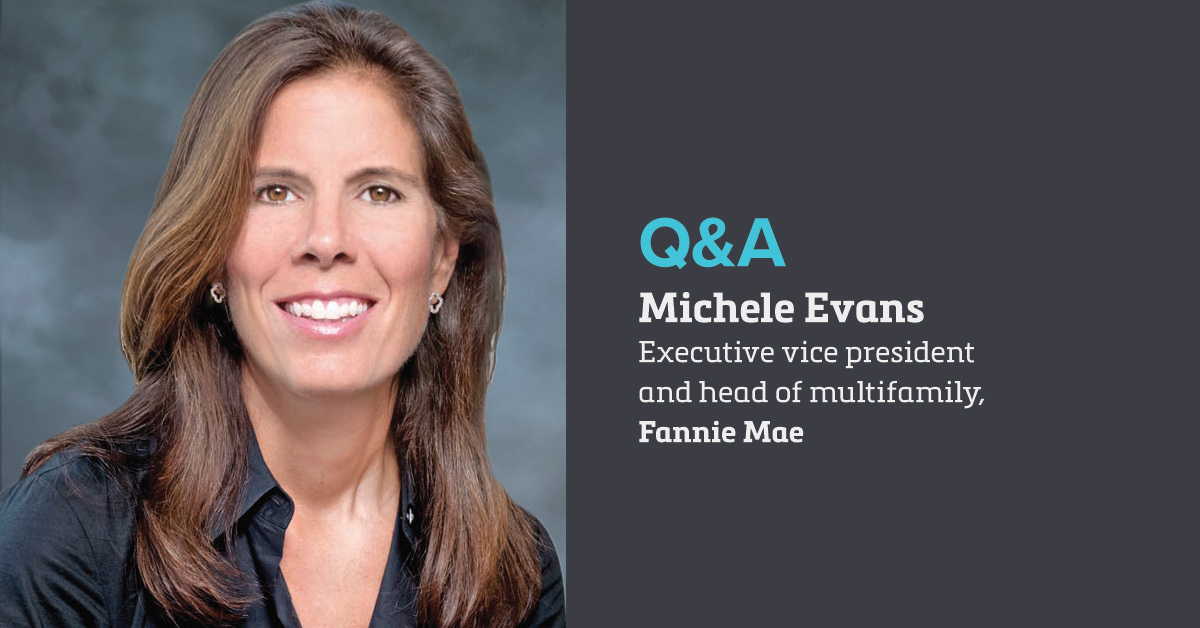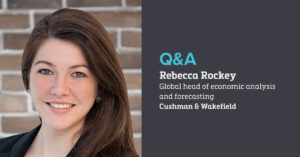The government-sponsored enterprises (GSEs) Fannie Mae and Freddie Mac are the two largest financiers of multifamily housing in the U.S. They also are the primary funding sources for affordable- and workforce-housing properties. Michele Evans, the head of multifamily for Fannie Mae, spoke to Scotsman Guide about where the agency plans to take its business in 2021.
The GSEs had record multifamily financing volumes in 2020, including $76 billion from Fannie alone. What was the reason?
When COVID hit, acquisition activity slowed down tremendously. Most of the business that was done through the second and the third quarters of last year was related to refinancing. Borrowers were really taking advantage of the incredibly low interest rates.
We think the overall multifamily market is going to be somewhere around $320 billion in 2021. I would call that a strong year. Rates, though, are not as low as where they were last year. So, you’ll see us going back to more of a normal distribution between refinances and acquisitions. Acquisition activity is definitely going to pick up. It is going to be a strong year, but we’re in the middle of a pandemic, and a lot of things are predicated on the additional stimulus and the vaccinations.
We think the overall multifamily market is going to be somewhere around $320 billion in 2021. I would call that a strong year.
The GSEs must spend half of their $70 billion allowed cap in 2021 on financing apartments with rents affordable to people at or below 80% of the area median income (AMI). Do you expect to use the full remaining 50%, or $35 billion, outside the affordable arena?
We always start out leaning on the mission side and do everything we can to make sure that we fulfill our obligation of at least 50% (for affordable projects). We typically target a slightly higher number than that because we want to make sure we are serving the affordable market. But we clearly believe we need to serve the other side of the market.
What is that? The space between 80% of AMI and 120% of AMI, that’s hardcore workforce housing, and we feel we need to provide liquidity to that market. The distribution of our business is going to look similar to what we’ve done in the past.
Why has Fannie been so active recently in the U.S. Department of Housing and Urban Development’s rental-assistance demonstration (RAD) program?
RAD basically improves existing multifamily affordable housing that we have in place today. It’s a tool that helps upgrade and renovate existing public housing authority properties throughout the country. We think that’s really important because there’s a fair number of properties in dire need of upgrades and renovation. And this particular program allows us to do that.
We just completed a deal called the Manhattan Bundle in New York City, where about 1,700 tenant-occupied public housing units in Manhattan were renovated. Basically, there was $158,000 per unit worth of upgrades that will be made to kitchens and bathrooms, windows, and common-area enhancements like elevator security, mechanical and electrical systems. That work is going to be conducted over a three-year period.
Can you talk about your agency’s digitization effort?
We started our digital-transformation journey in multifamily about eight years ago. We’ve taken a complex assortment of stand-alone services and put them into a suite of applications that allow us to work better with our customers.
Our flagship example of this is the DUS Gateway platform, which gives us the ability to conduct business in a seamless fashion. It would have been very difficult for us to have done the high volumes that we’ve had over the last couple of years without the Gateway platform, given the remote world that we’ve been living in. We’ve just recently introduced automated pricing, which allows us to price business in the evenings, on the weekends and on holidays. We’re taking each piece of our business, and we’re automating it and we’re digitizing it.
Any final thoughts?
There’s just a lot going on. It’s been a challenging year. You know, it is all about trying to get out of the pandemic. The market definitely is getting through it and we’re excited about what we’re able to do to help support the market. ●





